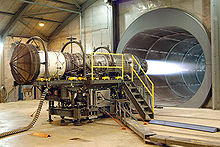It is important to note that "cherry picking" time frames very much influences price performance of investments! I am trying to show both long-term price patterns (20 years) as well as medium term patterns (3 years), but I will comment on price movements for other time frames as well.
Common stocks of US companies are a major component of almost all funds (pensions & retirement funds, mutual funds for general investors, etc.). The "S&P 500" stock price index is probably the most commonly referred to index of investment pros (as the Dow Jones Industrials index has various well-known problems and is limited to just 30 companies).
The below chart shows the performance of the S&P 500 over the last 20 years or so (last price 2063 last Friday, 21 Nov). Over this particular long period, the performance of the S&P is pretty close to its "long term average" of about 8% per year (not including dividends, nominal dollars (does not include inflation)).
These past 20 years have included such scary times as the tech crash in 2000 as well as the financial crash of 2008. Note the two well-known "Double Tops" of 2000 and 2007, these are formations that technical traders follow.
8% plus dividends is not bad at all! For 20 years... Compared to many other longer-term investments, that is hard to beat.
If we look at the shorter-term, the percentage gains are even better. "Exquisite timing" of buying at the March 2009 lows until now would yield a spectacular return of around 20% per year!
Just looking over the last three years ("weekly chart", from stockcharts.com) is spectacular in its own way as well (*click* this or any image for a clearer view):
Woooowww... That is one of the most spectacular (unusual) charts I have ever seen. The S&P 500 has gone almost straight up since about January 2012. Why, it almost looks manipulated!
Doing the (approximate) math tells us that the S&P 500 is up about a mighty 20% per year (again not including dividends). This pretty much matches the gains since the lows of March 2009.
20% per year (plus dividends, call it 1% more yields a total gain of some 21% per year) is a return very rarely seen among legitimate investments.
* * *
GOLD is perhaps the Bears' best investment. I hold a pretty fair amount of gold. I have owned physical gold since the late 1980s. Most gold that I have bought has been since 2002, I have bought fairly regularly (and in about the same quantities). Here is a 20 year chart of gold:
The time frame (Jan 1994:present) is the same as the first S&P 500 chart. Note that these are monthly prices of gold, so the very peak price seen in 2011 (almost $1900) is not shown. Still, the peak prices of gold are shown, as we holders of gold are aware...
Gold's price has been going up an average of about 6% in the above period. Here are a couple of other quick comments on the two 20 year charts (S&P 500 vs. Gold):
-- the charts look very different even though BOTH are up moderately
-- stocks being up some 8% per year (vs. gold at 6%) is a MUCH better performance
And, to illustrate gold's performance over the past three years (stockcharts.com):
* * *
Below is a chart showing performance of both gold and the S&P 500 over the past 20 years, this is just a combination of the earlier two charts.Stocks outperformed gold from 1994 to about January 2008. Gold then was better until mid-2011. And more recently stocks have performed better. Being curious, I ran the 20 year data to get a correlation coefficient of 0.486, values around, say, 0.400 to 0.600 are considered "moderate" correlations by the statisticians. But, 0.486 for asset price increases for a 20 year period is rather low, remember that almost all prices are up over 20 years...
Below is a similar chart, but only for the past three years:
Mmm... Gold has gone down over the past three years while stocks have gone up. Granted, three years is not a long time, at least for this three year time frame, stocks have performed much better than gold. Correlation coefficient: an impressive -0.912! Stocks have been in favor, gold out of favor.
For this three year period, we BEARS (defined as bullish on gold and bearish on stocks) have been wrong!
* * *
There are lessons to be learned here...
One topic I have written about at some length (and from different viewpoints) is on the idea of diversification. I continue to believe that a proper diversification is a key to maintaining good and less risky returns on investments. If I had had the "courage of my convictions" and gone "All Inn" on buying gold, say, three years ago, I would be down... I am going to state that for all but a tiny minority, diversification is a better investment idea than concentration.
Secondly, all of the above analysis is looking at the past... I still believe that we are in for rocky times ahead (even if I have believed THAT for a long time). It is possible that we BEARS may be right before long. *
* Even broken clocks are right twice a day.
Um, do some of us see a "Part Two" coming...?





























_TM.png)


















